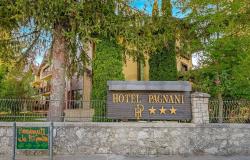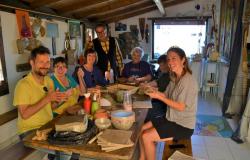Santo Stefano in a painting by Giotto.
December 26th is il giorno di Santo Stefano (Saint Stephen's day) and an important day in the Italian calendar. Traditionally Italians stay at home with their families on Christmas day, but St. Stephen’s day is a cause for celebration; it’s a day where people wrap up and go out with friends and family. Streets that the previous day lay silent and empty are alive and bustling with well-wishers, as it’s traditional for people to visit the nativity scenes inside local churches and make a small donation.
St. Stephen, one of the first deacons of the Christian Church, also became the first Christian martyr; his story can be found in the sixth chapter of the Acts of the Apostles; the chapter also recounts the plot against him and the start of the trial that resulted in his martyrdom.
On 26th December 1394, upon the orders of the Knights of St. John, the relics of St. Stephen were removed from the repository in the Castle of Monopoli for protection from a Saracen attack and transferred to Putignano, a town in the province of Bari for safe-keeping.
As it made its way to Putignano, the banner of Knights guarding the wagon that carried the sacred cargo attracted a following of overjoyed townsfolk, happy having been chosen to care for the relics. On its arrival in the town, before Mass, the crowd dusted their faces with Farinella, a mixture of ground chickpeas and barley to exhibit purity and this gave birth to the oldest carnival in Europe and also the longest.
In Putignano, the festival of St. Stephen begins on December 26th with poetry spoken in local dialect to replicate the original Mass and the festivities come to a conclusion on Shrove Tuesday, the day preceding Ash Wednesday.
Every Italian town has its own way of celebrating; some will have processions dedicated to Saint Stephen, whereas others may be a low key affair where people visit the local hospitals to make a donation.
It is also popular to pay a visit to the living nativity scenes staged in many Italian towns, like the one in the Abruzzese mountain town of Fara San Martino, where the locals gather in the main piazza for a re-enactment of the nativity. In Veneto, in the province of Padua, more than 300 participants (figuranti) re-enact one story from the Bible. In Vaccheria, a small borgo near Caserta, a living nativity scene is set up for 2 km around the streets in honor of the 18th-century Neapolitan presepe vivente. In Sicily, the annual presepe vivente held in Ispica (Ragusa) is one of the most popular on the island and attracts every year thousands of visitors.
Whatever forms the celebrations take, one thing that is guaranteed is that there will be a feast - smaller than the previous day’s feast but a feast nonetheless.








